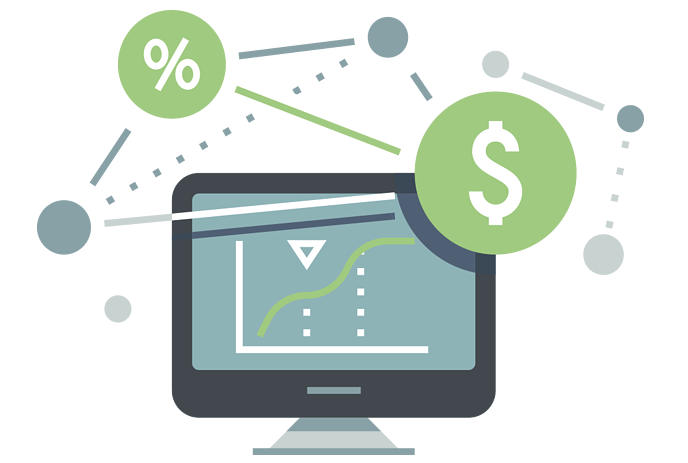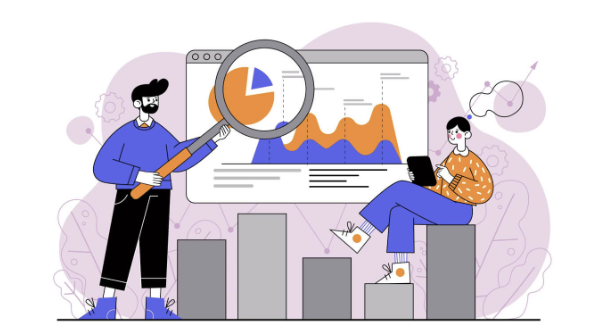Stocks and CFD trading are popular selections for investors out of the various investment markets we have today. Both of these have striking similarities in how they are traded, however, […]

Stocks and CFD trading are popular selections for investors out of the various investment markets we have today. Both of these have striking similarities in how they are traded, however, there’s more to it.
Multiple differences between stock and CFD trading exist and these differences serve as tipping points in determining which trading option is best for you. How do you now make a selection?
Not to worry, our article clears up the air, as we provide information on
- The differences between stock and CFD trading,
- How short-term traders benefit from CFD trading, and
- The costs and risks of Stocks vs CFD trading. Let’s get started.
Differences Between Stocks and CFD Trading
As you may have learned, stocks are securities representing a fraction of a company. When you trade stocks, you buy a number of these securities and practically own a fraction of the company issuing them. CFD trading is different.
CFD trading is a derivative form of trading that only involves taking positions on the price of assets instead of purchasing these assets. You earn (or make losses) based on the difference between your entry price and exit price. This brings up our first and major distinction between these trading options.
CFD trading and Stocks trading majorly differ on the ground that, while you own the stocks with stock trading, you don’t have ownership of them in CFD trading. You only take positions on the prices, and it is through this that one other difference comes to exist.
Whichever option you choose determines whether you may vote or have a say in the company decisions. Stock trading gives you this power as you have ownership of share certificates, while CFD trading doesn’t. Now, what other differences exist?
Where The Line Is Drawn When It Comes To Actual Trading
The differences mentioned above are not really important to why we trade in the first place, which is to make profits. In this section, we discuss the trading possibilities available within stock and CFD trading.
To start with, stock trading only represents one market where you are limited to dealing with equities and ETFs. CFD trading covers over 9,500 assets, including equities. How you trade these equities also differs.
While CFD trading allows you to leverage and take shorts (profit from a fall in price) on your trades, you do not have these useful options when trading stocks. Additionally, you may trade CFDs for 24 hours (5 days of the week), while stock trading is only possible when the stock exchange window is open.
The last difference we will point out is the cost of trading. With CFD trading, you are charged a fraction of your spread, commissions, and an overnight fee. You incur only commissions and holding costs when you trade stocks.
Here is a table of differences that you may quickly run through
| CFD Trading | Stock Trading |
| Derivative where you only trade on the price of an asset | You have ownership of the asset (stocks or shares) |
| You cannot vote on company decisions | You have the right to vote on company decisions |
| Over 9,500 assets and commodities | Limited to only equities and ETFs |
| Allows for Leveraging | Does not allow leveraging trades |
| You may profit from long and short positions | You may only profit from a long position (increase in price) |
| Market is open 24 hours, 5 days of the week | Market is only open when the stock market is open (9:30 am to 4 pm for US stock markets) |
| Costs include spread, overnight fees, and commissions. | Costs include commissions and brokerage rates |
From the table, you see that CFD trading holds most of the investment advantages. You have access to thousands of assets, enjoy the option to leverage your trades, profit from either an increase or decrease in the price of an asset, and also have 24 hours of the day to trade.
Although these are comprehensive, they may not be enough for you to make a decision. We will now talk deeper about the risks and costs of stock and CFD trading, as well as who each trading option is for.
Which Carries More Risks; CFD Trading or Stocks Trading?

Remember one of the differences we pointed out is that CFD trading allows you to leverage on trades while stock trading does not. This means that, for instance, you may only use $100 to take a position worth $2000 ( using a “×20” leverage from your broker).
However, just as leveraging exponentially increases your potential profits, it also increases your losses (or how fast you may be liquidated). With the ×20 leverage used in the example, you only need a loss of 5% to be liquidated with CFD trading. There’s even more.
Unlike trading stocks, your losses aren’t limited to the amount you have deposited with CFD trading. When your position is liquidated and the volatility of the asset price exceeds your liquidation price, you then owe your broker some money. This doesn’t exist with stock trading.
From these, you see that CFD trading carries more risks than stocks trading due to the possibility of leveraging positions. Regardless, proper risk management allows you to reduce these risks to the minimum.
Costs Of Stocks vs CFD Trading
Details on the costs of stock and CFD trading are important for you to make a decision.
As mentioned earlier, Stock trading only includes commissions and brokerage rates, while CFD trading includes charges such as a fraction of your spread, commissions (if you trade equities), and overnight fees. These overnight fees are the main factors to help with your decision.
Overnight fees are charges from your broker that you pay for holding positions overnight. This means that, if you are a long-term investor, you always have an extra fee to pay every day when it comes to CFD trading.
Stock trading only charges you a one-time commission fee, which means you don’t pay extra for holding positions or shares over a very long period.
All this means that CFD trading is the better option for short-term traders and stock trading is better for long-term investors.
Conclusion
We have covered everything you need to know about how CFD trading compares to stock trading. The most important factors you need to take note of are that CFD trading requires greater risk management than stock trading, and is a good option for short-term traders.
Sponsore Post
Support us!
All your donations will be used to pay the magazine’s journalists and to support the ongoing costs of maintaining the site.
Share this post
Interested in co-operating with us?
We are open to co-operation from writers and businesses alike. You can reach us on our email at cooperations@youthtimemag.com/magazine@youthtimemag.com and we will get back to you as quick as we can.








